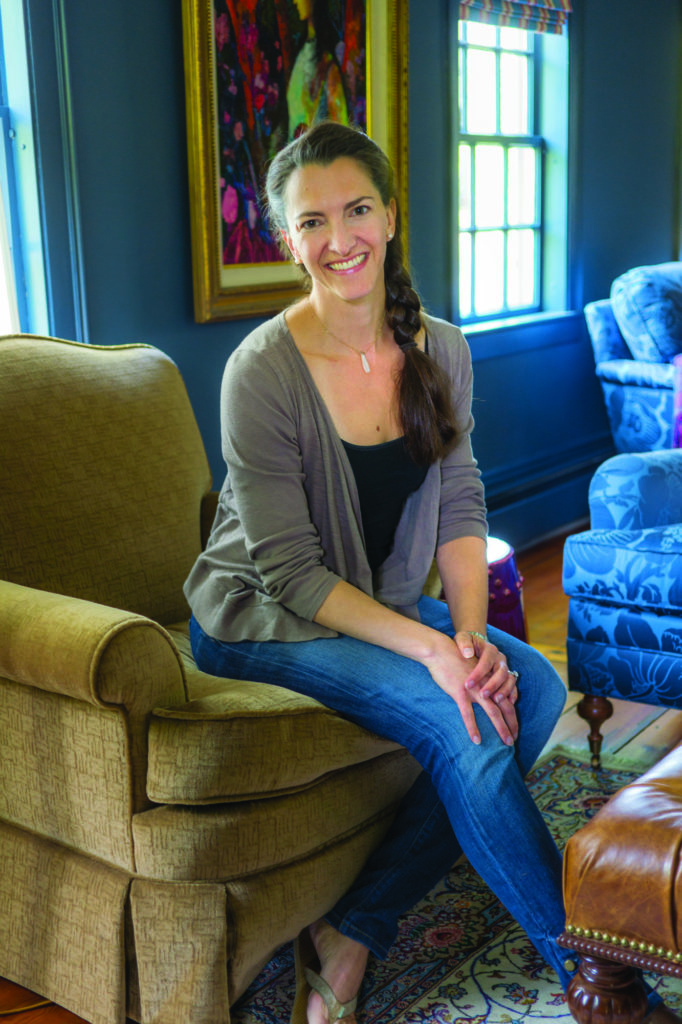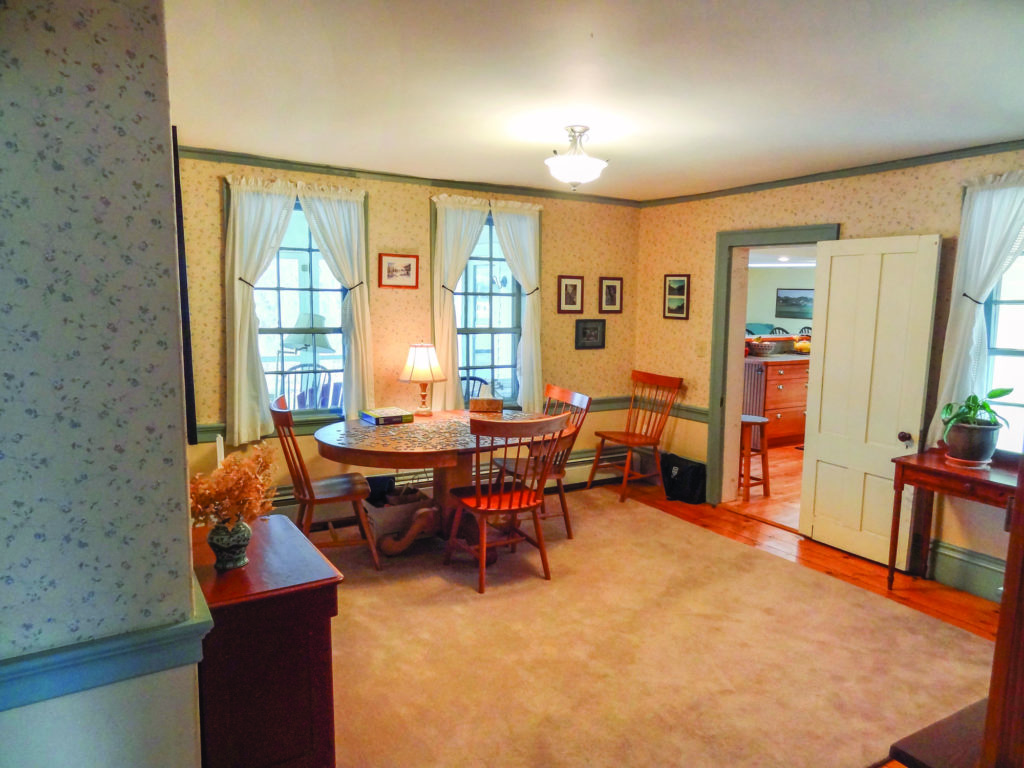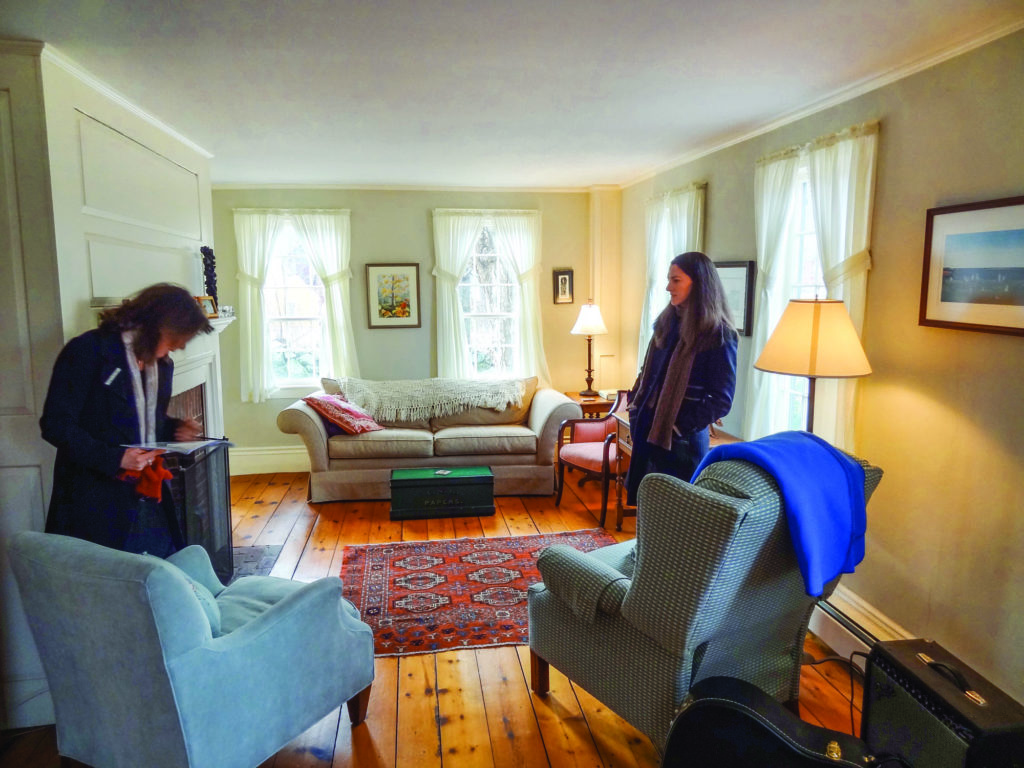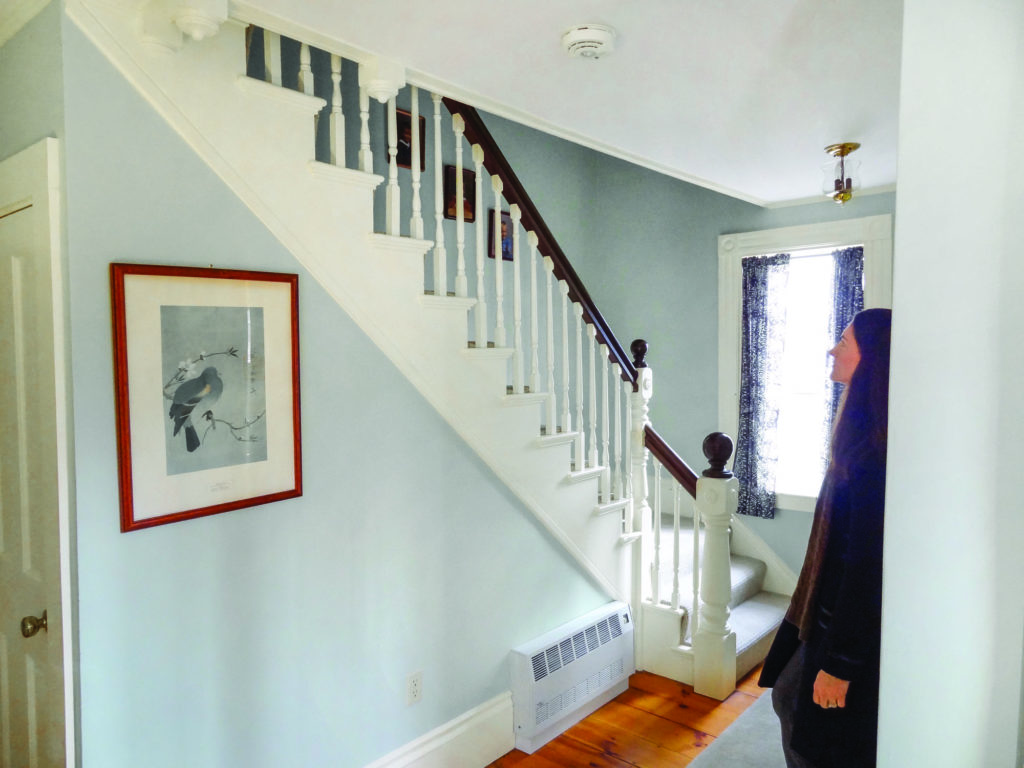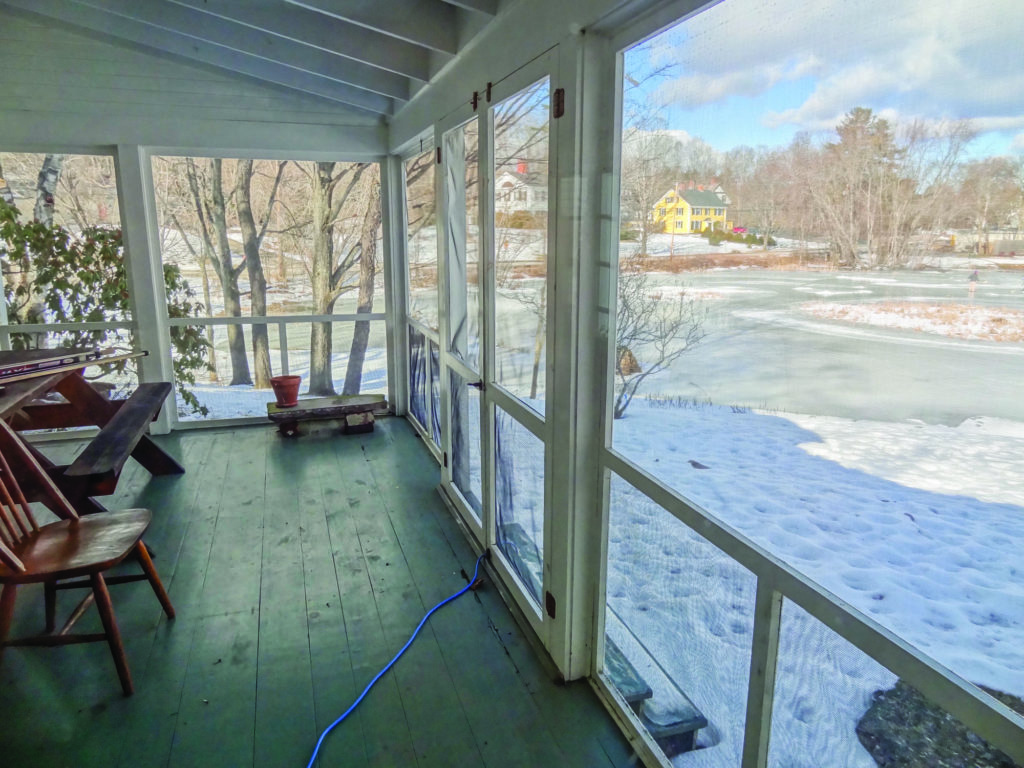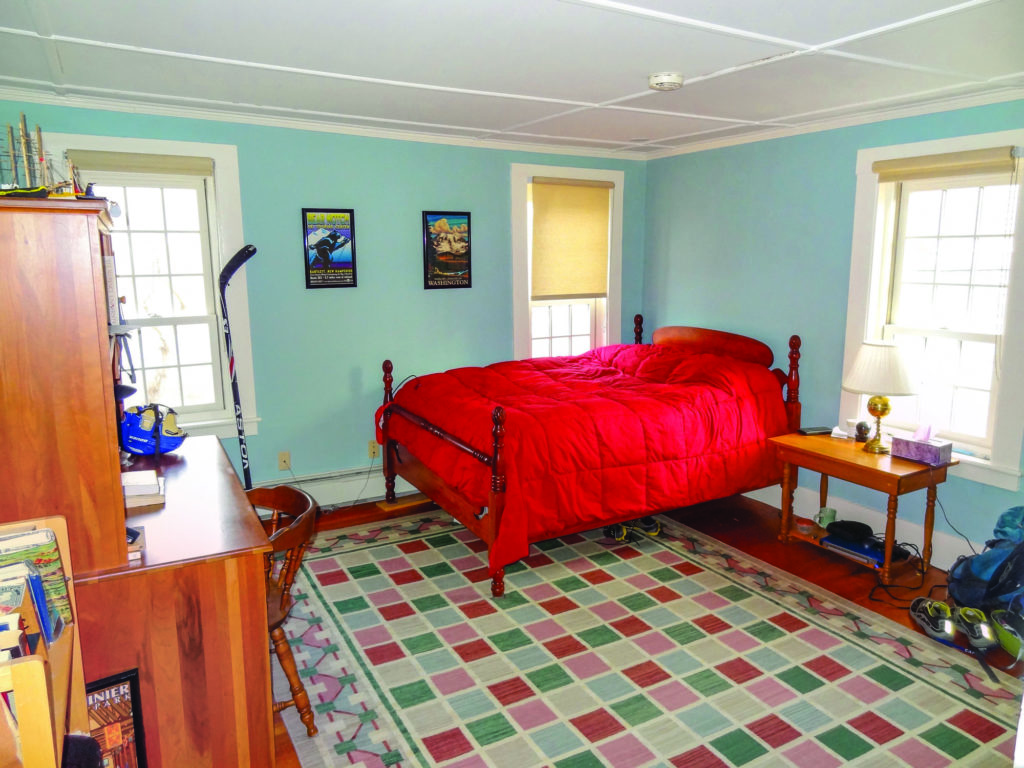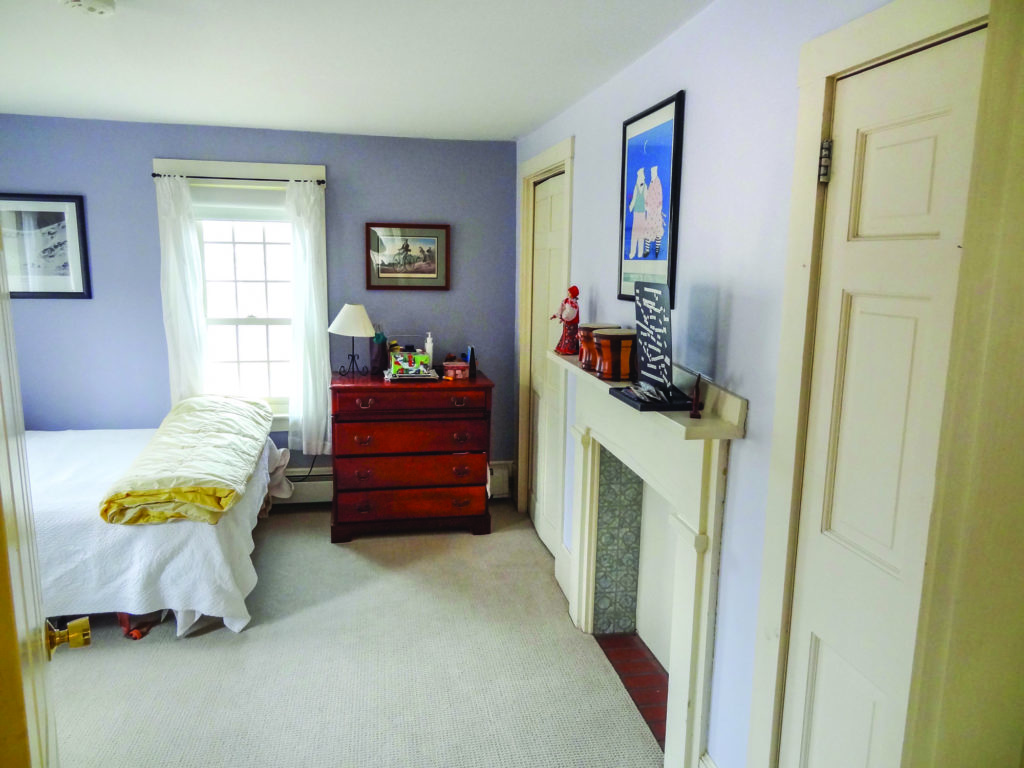Throughout the Northeast, many sturdy old houses like this one remain. Inside, they’ve often been stripped of character, or decorated in a trite, Early American vein. This 1790 farmhouse holds delightful surprises. Eric Roth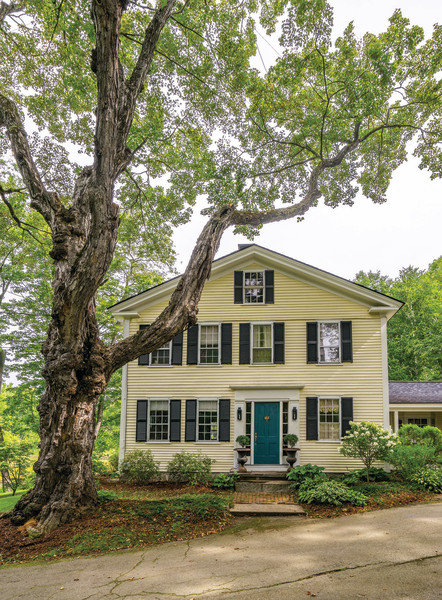
Maple Rest, our 1790 Federal farmhouse in New Hampshire, was in good condition, but had no spirit left inside! The parlor mantel remained (once there were seven working fireplaces), but trim had gradually been eroded. The house was blah. To some extent, that allowed me artistic license.
So says homeowner and decorator Amy Mitchell, who lives in this, their “forever house,” with her husband, Rob, and sons Earl and Lee. Taking it slow, she’s been improving and decorating it to suit the family while keeping the 18th-century house’s history and quality in mind. “I want everything I do to stand the test of time,” Amy says.
She calls her approach “fresh classic”: tradition with a twist. In selecting fabrics and wallpapers, for example, she will always nod to the past, but the colors and patterns are refreshed. With bold strokes, she’s taken the historical context and made it work for a modern family.
Amy Mitchell reads to her son Lee. Eric Roth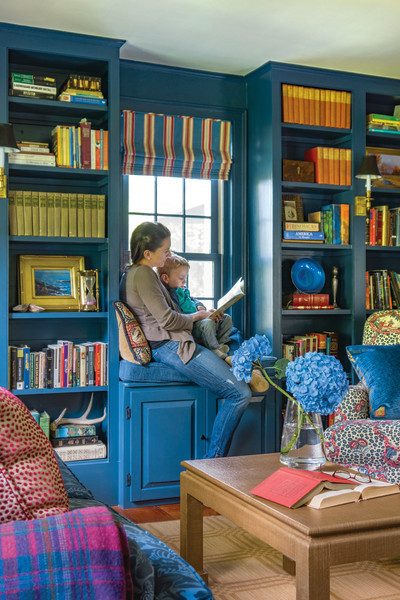
“We curated our finds from auctions, Craigslist, Etsy, and eBay to stay on budget,” she explains. She wants good, American-made furniture, not big-box MDF and staples, and for now that means a reliance on vintage—not yet antique—furniture of the past 60 years. She also learned, early on, that paying a decorator for time yields the trade discount, making designer wallpapers and upholstered furniture more affordable. Before Amy earned a certification, designer Dena Hamilburg introduced her to the better quality and more classic proportions of showroom furniture.
Amy also discovered the best local resources. Living in north central New Hampshire, she wasn’t willing to travel to Boston for every purchase. “Looks can be deceiving,” she says: a fairly local company called The Rug Depot has a huge selection of high-quality carpeting and great customer service. She also found that the local picture-framer on Main St. uses better materials and does a more custom job for about the same price as the chain stores when they are supposedly offering a “blowout” sale.
Acting as living room, music room, and library, this one was a deliberate splurge. Custom cabinets, walls, and trim are painted all in one color: an old tradition lately rediscovered. The chair in a leopard toile is a classic with a twist. Roman valances are an efficient use of a pricey fabric. Eric Roth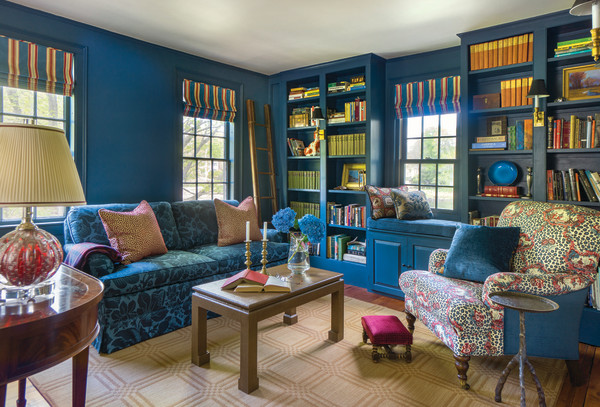
Her next big project will be the kitchen, “late 1990s honey-maple with blue laminate,” she says. “It’s too bad previous owners sunk money into it, because it simply doesn’t fit the house.” The old summer kitchen/woodshed and a 1970s bumpout were annexed to make a big square room, half of which has a 6 ½’ ceiling. She plans a new layout to incorporate a small keeping room.
“The smallest baby grand we could find” came from an estate sale. The Federal-style convex mirror is oversized to keep it unfussy. Eric Roth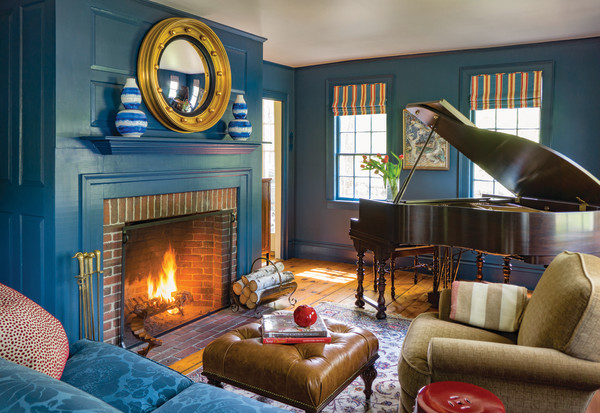
Library in Blue
The dimensions of the long, narrow room were odd, and the family wanted to include a piano and a large book collection. It worked! The most arresting thing may be the color (‘Stiffkey Blue’ by Farrow & Ball)—pricey for paint, but paint is always a decorating bargain. Low-profile bookcases by the contractor created a library, a must for these bibliophiles; and “I wasn’t doing IKEA in this room,” the owner says. Sofas from Charles Stewart Co. were made more affordable because the fabric, by Old World Weavers, had been discontinued. The tan chair has Donghia mohair fabric—bought on eBay. The ottoman is a vintage Calico Corners piece via Craigslist, the leather was purchased on eBay, and reupholstery was by Correctional Industries at the New Hampshire State Prison for Men.
The silk rug and then the wallpaper were chosen for the dining room, a new classic in what was once the farmhouse keeping room. Eric Roth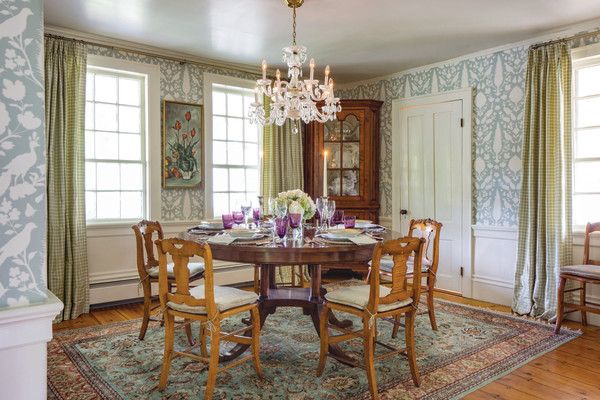
The Dining Room
Astute spending allowed splurging on a breathtaking wallpaper from Schumacher; the amount needed was lessened by large windows and treatment of the lower walls as a painted dado. The paper is ‘Chenonceau’, a pattern inspired by a 17th-century Persian damask, with nevertheless a fresh take on fauna and palette. “It also reminded me somewhat of Morris and Voysey designs,” Amy says. “It’s historical but not a document pattern. I take some artistic freedom in this house, which is not a pure example. I would be more accurate if I owned a true period piece.”
The new paint color, keyed to the coral in a painting bought at an estate auction, made all the difference in the foyer. Eric Roth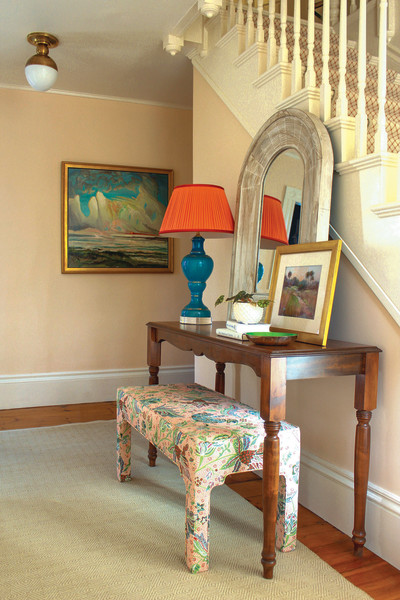
Initially, the room was inspired by the vintage silk rug purchased at an auction. “I’m so glad most people don’t do auctions,” Amy confides. “I get the best bargains from under-attended ones . . . a 9′ x 11′ silk rug for less money than a new one that size at Pottery Barn.” The corner cabinet is by D.R. Dimes—purchased secondhand on Craigslist. The rest of the furniture, for now, is good quality but not handmade or fine reproduction. The chairs came from eBay, the chandelier through Etsy.
“My foyer/stairway was not charming, welcoming, or lovely. It was dingy and blah, “ wrote Amy Mitchell on her blog. “I love when art serves as the inspiration.” The new paint color, keyed to the coral in a painting bought at an estate auction, made all the difference. The turquoise opaline lamp and the console are vintage pieces from online sellers; other furnishings are from catalog retailers. The stair runner is a machine-made Couristan, the ceiling fixture by Thomas O’Brien.
The handmade candlewicking and tufted-chenille bedspread with a traditional late 18th-century wedding-ring pattern is from The Heirloom Collections (theheirloomcollections.com). It’s paired with cost-effective linen drapery from IKEA and a rug found at auction. Eric Roth New Hampshire state flag softens the wall behind the bed. The vintage rocker adds a rustic note. Eric Roth Master Bedroom A Boy’s Bedroom String lights supplement the hanging candle lantern from Joss & Main in the screened porch. Eric Roth The Porch The existing screened porch was a great amenity going unused. Furnishing it as a room was inexpensive. The vintage wicker furniture came from a consignment store, and so did a little green table and a wrought-iron chandelier. The all-weather rug is from Pottery Barn. Pillows from Pier 1 and through craftspeople selling on Etsy add color and pattern. > tip no. 1: use paint, it’s cheap-ish & effective. > tip no. 2: splurge on less of a good thing: expensive fabric for a table runner, or for valances instead of Roman shades. > tip no. 3: buy old stuff (vintage, not antique) and upgrade with custom lampshades or new cushions. > tip no. 4: look online to Etsy and eBay, not to mention Craigslist. And go to auctions! > tip no. 5: splurge big where you’ll really see it. > tip no. 6: buy generic, ephemeral, and less-used things from retailers and catalog companies. Especially for kids. Amy Mitchell of Home Glow Design. Eric Roth Amy Mitchell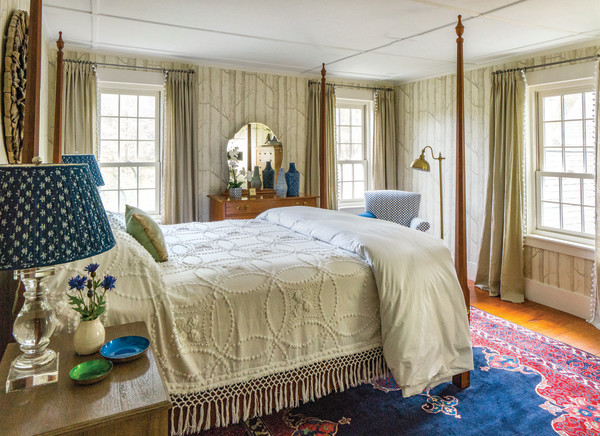
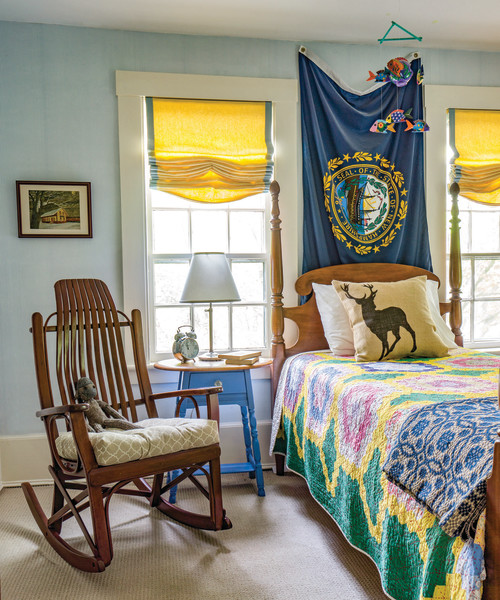
The bedrooms came first, “easy rooms that would be refuges for my husband and me, and our son Earl, while we tackled more difficult rooms,” Amy explains. This room retains its beaverboard ceiling—a case of leaving well enough alone. Its decorating scheme started with the wallpaper, a 1950s pattern by Cole & Son called ‘Woods’. Amy’s husband, Rob, saw it in one of her old magazines and liked its reference to the birches outside their window. “Though it’s a modern paper, it’s tone-on-tone and pastoral, reminding me of toile,” Amy says. It becomes an unexpected backdrop for traditional silhouettes: the four-post bed and Colonial-style chest, an oriental rug. The cherry bed was free, a hand-me-down from a friend whose guest bedroom was about to become a nursery. “I wouldn’t have chosen it but I wasn’t going to turn it down,” Amy says. “You don’t always get to have—or have to get—your first choice.”
The York wallpaper was a bit of a splurge even with the trade discount. But the bed is from an estate sale; rocker, bedside table, and dresser (“sturdy rock maple”) were found at an antiques mall. And—this is a kid’s room: lamps, alarm clock, and bookcase came from Target.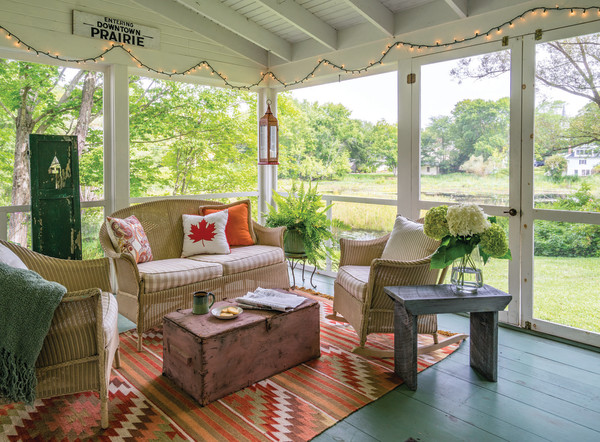
Interior Design Tips
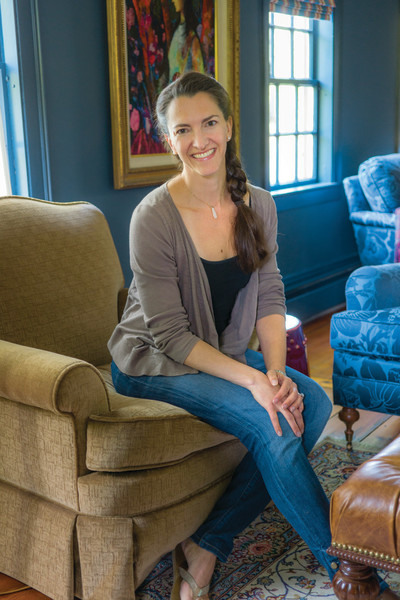
A classical singer (she’s a graduate of the Manhattan School of Music), Amy Mitchell came to love interior decorating as she remade two previous residences, a New York City apartment and a ranch in Nashville. As she began work on this house, she was mentored and encouraged by Boston decorator Dena Hamilburg. Amy received her color certificate and interned with Kelly Rogers Interiors in Boston. She’s been taking clients for two years. homeglowdesign.com



